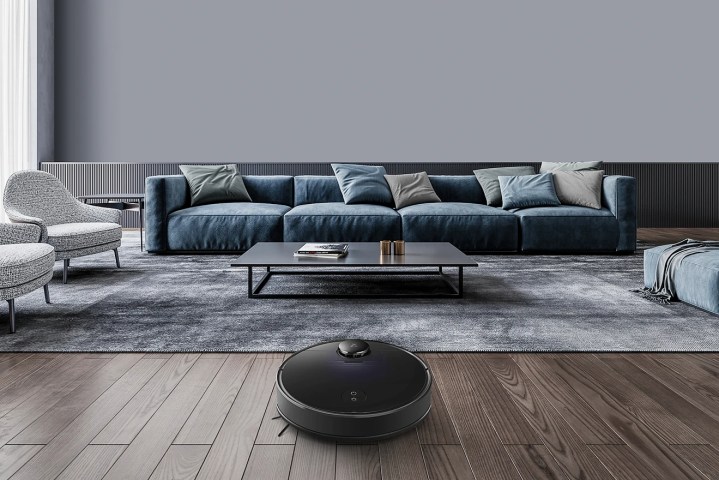When it comes to keeping your home clean, few smart home devices are as beloved as robot vacuums. These nifty gadgets let you put away your cordless vacuum and sit on the couch while it sucks up all the dust, pollen, debris, and other gunk that’s trapped inside your carpet. Some models even double as a mop, while others can automatically empty their dustbin.
There’s a wide variety of robot vacuums on the market today, which means you can find a product for every budget. It also means there are a lot of choices to wade through — and not all of them are worth considering. If you need some help with your search, here’s how to choose a robot vacuum in 2023.
Once you’re done checking out this list, be sure to read through our roundup of the best robot vacuums.
Features to consider in a robot vacuum
Sensory sophistication and virtual mapping
Most modern robot vacuums use sensor technology to navigate around a room, but some models are more advanced than others. Basic robots have infrared sensors to stop them from bumping into things and changing direction when they collide with something, whereas more sophisticated models will map out a room using laser-guided scanners or a combination of cameras and sensors. These high-tech robots also sometimes have “dirt sensors” to be sure they have cleaned properly, and can add additional cleaning passes to dirty or high-traffic areas.

Automated scheduling
Most robot vacuums have a scheduling function, so you can set it to work at specific times of the day or week — when you’re at work, for example. Most of this scheduling is done via a companion app on your smartphone that makes changes and updates easy. With some models, however, you’ll need to manually program this schedule into the bot using buttons. If that sounds like about as much fun as setting the clock on your car radio, make sure to check in advance how the calendar interface works on your chosen robot vacuum.
Some robot vacs also combine high-tech mapping with that scheduling feature (Roomba’s i7 and s9 vacuums have this) and let you program certain rooms to be cleaned on certain days, giving you amazing flexibility and freedom.
Automatic dirt disposal
With most bots, they may do the sweeping up, but you’ll have to empty it just like any regular vacuum cleaner. However, some models will automatically dispose of dirt into their own bin located inside the home base, and they will remind you when this bin needs to be emptied. These models tend to be more expensive, however. With the majority of robot vacuums, you simply pop out the dustbin, open a flap or door, and pour it into the garbage. Not a big deal, but if you’re looking to save even more time and hassle, automatic disposal is a feature to look for.
You can find it in robots like the Shark IQ Robot R101AE Self-Emptying Robot and the Roomba s9+.
The Roborock S8 Pro Ultra is one of the latest robot vacuums to hit the market, and it can automatically clean its dustbin for weeks before needing any manual intervention — making it an easy recommendation.
Additional mopping functionality
Many manufacturers now produce devices that function as both a robot vacuum and a robot mop. These typically require manual intervention between each task — that is, you’ll need to remove mopheads before letting the robot wander onto carpet — but some high-end models offer fully automated cleaning routines.
The Roomba Combo j7+ is a particular standout, as it can automatically stow its mophead away before moving onto carpet. This means it can clean just about every surface in your home without any manual input. It’s a bit expensive, but be sure to consider a robot vacuum + mop combo if your home is composed of multiple floor types.
A similar feature can be found on the Roborock S8 Pro Ultra, although its mop can only retract a few millimeters. That’s not a big deal if you have short carpet, but it might graze the top of plush carpets on the way back to its dock.
Which are the best robot vacuum brands?
There are loads of great robot vacuum brands out there, all with varying price points and levels of functionality. Before purchasing a vacuum cleaner, it’s a good idea to do a little research on the brand and check reviews, as well as customer comments. These are some of the biggest brands:
iRobot
Although it’s one of the more expensive brands, iRobot makes some of the best and most well-reviewed robot vacuums on the market. Their most recent model, the Roomba S9+, for example, has a 3D sensor allowing it to move around your home with incredible intuition. Conveniently, iRobot has also introduced vacuums at all price points, from budget to premium, so there’s likely to be a model that’s right for you.
 Neato
Neato
Neato may be as popular as iRobot, but it’s got a reputation for making solid, hardworking bots. The latest Neato models are D-shaped vacuums with incredible cleaning power and superbly-long battery lives.
Ecovacs
Ecovacs models are extremely sophisticated, with the latest comprising a Wi-Fi-enabled camera, a mop plus the vacuum, and the ability to create highly complex virtual maps of your rooms. It even gives you the ability to move the bot around your home remotely and use the camera to see what’s going on.
Eufy
These robot vacuums are great budget-friendly options with fewer fancy features but a focus on strong suction power. The latest Eufy model has an easy-to-use app and is one of the slimmest on the market, meaning it can get into lots of hard-to-reach areas.
 iLife
iLife
Another affordable brand, iLife, makes powerful vacuums with a good range of features such as voice control and room mapping. It also offers several different cleaning modes and dirt sensors.
Roborock
Roborock offers mid-range and premium robots that are loaded with technology. Roborock vacs typically offer advanced mapping, powerful suction, and lengthy battery lives, and many offer mopping in addition to vacuuming.
Should you get a round robot or a D-shaped robot vacuum?
Most robot vacuums are designed with a round shape, as this makes it easy for them to move around independently and not get snagged; however, that lack of corners can make it difficult to get into narrow spaces or angles. D-shaped robots have a range of sensors and the added bonus of being able to get closer to wall edges and corners than their circular counterparts.
D-shaped robot vacuums also tend to have wider roller brushes that span the length of their flat edge, making them more efficient than round models, giving them a bigger cleaning footprint and theoretically cutting down on overall cleaning and runtime.
However, round robots tend to get stuck less frequently. At the end of the day, other features such as suction power, mopping skills, and affordability are typically more important than the shape of the vacuum.
Maintenance considerations
You will have to look after your robot vacuum just as you would a regular vacuum — perhaps more so since these smaller dustbins need more frequent emptying. You’ll also need to dust the sensors, empty and clean the dustbin, and keep the filter clean to make sure your vacuum runs smoothly. As with most machines, maintaining it will keep it running better and for longer. You’ll also want to check the brushes regularly to make sure they are not blocked, inspect the rollers for threads or fibers that can get wrapped around the roller and remove them, as well as clean the wheels and remove hair or tangled threads that may be impeding their movement.
If your robot vacuum doubles as a mop, you’ll also need to take care of its maintenance. Some high-end products do this for you, but if you pick up a budget-friendly model, you’ll need to be ready to clean the mop after each run and leave it out to dry.
Specifically, you’ll want to look for models that can both wash and dry their mops. Units with docking stations that can’t perform these features will require much more maintenance than you’d expect. And even if a robot vacuum can wash its mop, it’ll still be prone to obnoxious odors unless it can also perform a drying sequence. The best robot vacuums on the market use warm air to speed up this process and reduce the build-up of mildew-like smells.
They might cost a bit more, but we’d highly recommend picking up a robot vacuum that can perform routine maintenance tasks like the above. At the very least, be sure to find one that can empty itself after each cleaning cycle to truly automate your home care routine.
Price

As previously mentioned, the different brands of robot vacuum have varying price points, and they can range from around a hundred bucks to upwards of $1,000. Of course, it’s natural to pay more for trusted, high-quality brands such as iRobot. If you can afford the upfront investment, these models are extremely sophisticated and powerful.
However, if you are operating on a budget, you can find some great options that are way more affordable. iLife and Eufy have some superb, inexpensive models that may not come with all the functions you get with a more expensive vacuum but are nonetheless effective and responsive machines. Make sure to do your research before buying.
Keep in mind that products that cost less than $200 might be making significant cuts to hit that price tag. That could mean reliability takes a hit, or it simply won’t clean up to your standards. It might be best to bulk up your budget before purchasing a robot vacuum, as there’s nothing worse than a robot that requires constant babysitting or tons of maintenance.
It’s definitely a domestic dream to imagine never having to vacuum again, but with a robot cleaner, this is actually possible. With a host of brands sporting lots of cool capabilities and accessible price ranges, this dream can easily become a reality in your home.
 Neato
Neato iLife
iLife



